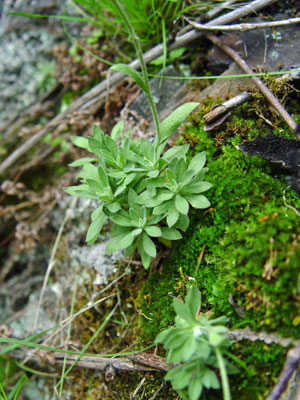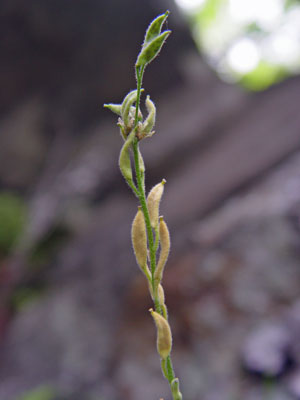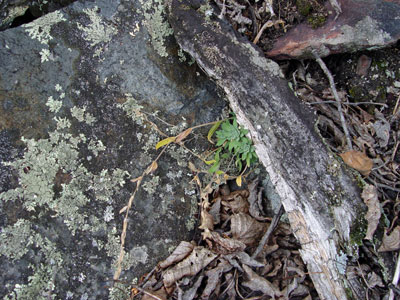DACF Home → Bureaus & Programs → Maine Natural Areas Program → Communities, Plants, and Animals → Rare Plants → Draba cana

Draba cana Rydb.
Lance-leaved Draba
- State Rank: S1
- Global Rank: G5
- State Status: Endangered
Habitat: Calcareous cliffs and slopes. [Rocky summits and outcrops (non-forested, upland)]
Range: Labrador, Gaspé, Quebec to the Yukon and Alaska, south to northern Nebraska, Michigan, Wisconsin, Colorado, Utah, Washington, also Eurasia.
Aids to Identification: Draba cana is a perennial with a basal rosette of crowded, slightly toothed, lance-shaped leaves. The flowering stem arising from the rosette has a few lanceolate leaves and terminates in a raceme of small white flowers. The most distinctive feature of the plant is the dense covering of stellate hairs on the leaves, stem, and even the seed pods, that gives the plant an ashy, blue-green color.

Ecological characteristics: This cress is apparently restricted to basic substrates, where it grows in full exposure on open, dry meadows, slopes on rock crevices of alpine and subalpine areas. In western mountains it is usually associated with the alpine cushion-plant community. There are no clear explanations for its widely scattered and infrequent distribution.
Phenology: Flowers June; fruits July - August.
Family: Brassicaceae
Synonyms: Draba breweri S. Wats. var. cana (Rydb.) Rollins; Draba lanceolata auct. non Royle.

Known Distribution in Maine: This rare plant has been documented from a total of 1 town(s) in the following county(ies): Piscataquis.
Reason(s) for rarity: Southern limit of range, calcareous habitat scarce.
Conservation considerations: Known populations are small, and subject to the vagaries of small populations like random fluctuations or localized disturbance events.